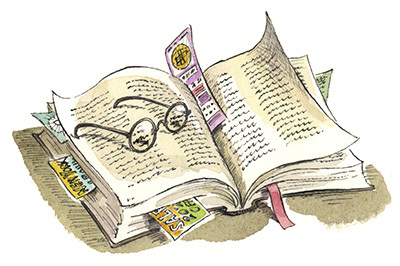Let me state a profound conviction that is also an adamantine prejudice: Barnes & Noble is not a bookstore, nor are any of its pale imitators. By my standard, the Hammes Notre Dame Bookstore is not really a bookstore — it is a T-shirt joint that happens to sell books. A real bookstore sells new and used books; it has a certain indescribable odor of mustiness plus dust and a faint whiff of old leather. The employees look like they were bred to live among books — they must be pale, unfashionably dressed, bespectacled and somewhat ethereal in demeanor. Most of all, they must know books.
The rise of Barnes & Noble and other such emporia partly explains the demise of real bookstores that cannot compete with their prices. Amazon is another part of the explanation. Finally, we have the rise of electronic books read on Kindles, Nooks, etc. To which I say: “A pox!” on all of them. Real bookstores are a place one goes to browse at length, root through their bargain bins in search of treasures, prowl the shelves looking for the odd or out-of-the-way, and perhaps, if one is lucky, strike up a conversation with a fellow book addict. Real bookstores are a pilgrimage destination, which is why in New York I almost never see a Broadway play but never miss the Strand bookstore on lower Broadway.

My views on this topic are horrendously old-fashioned. I know that Lorenzo de Medici would not allow printed books in the library named after him in Florence. He thought them vulgar and faddish, not fit to reside with his calf-bound, vellum volumes, and I feel I am the same stodgy type who would never read from an electronic tablet. In fact, I even feel a twinge of guilt when looking things up on Google.
Since we are about lists in this issue let me enumerate why I resist reading on tablets:
First, one must possess a book, and that means one must inscribe a personal name on its inside cover and, perhaps, add the mildly pompous “Ex libris” before the signature.
Next, one must read serious books with pencil in hand. Thomas Merton once suggested that we “contemplate with a pen.” Quite right. We should underline, make margin notations and compile little lists at the inside back of a book.
Third, one must add postcards, used basketball tickets, holy cards or other detritus within the book, so memories are triggered when rereading.
Fourth, books allow one to go back and forth, check the index, peruse the bibliography and otherwise stroll around the volume without punching buttons or moving cursors. Books are meant to be tactile, which is why we call them “used” books after purchase.
Fifth, books in a row or in a pile or stacked on the floor or marshaled neatly on a shelf are the best feature of making a room homey. A book-filled room says better than any interior decorator could imagine that a real live, thinking, breathing human being lives here.
Sixth, a book never runs out of power, never requires an outlet or a cord.
Seventh and finally, one can go back to a favorite book, peruse the underlining, reread the marginal notes and read again for deeper insight. My tattered copy of Augustine’s Confessions is annotated in different colors, indicating when I read it with students in the past and how I want to read it today. My equally battered copy of the Bible (NAB version) lists every time I worked through parts of it in the first course in theology at Notre Dame (21 times to be exact). The cover is now falling off my Confessions, but when I pick it up I have an old friend in hand and not some electronic gadget. I take some perverse pride in that fact.
— Lawrence S. Cunningham is the John A. O’Brien Professor of Theology emeritus at Notre Dame.